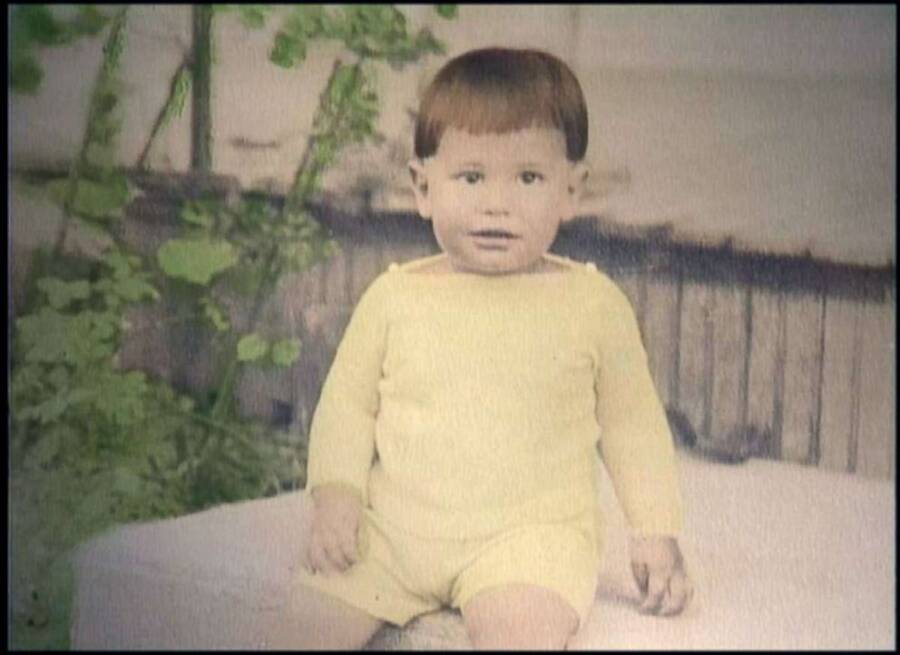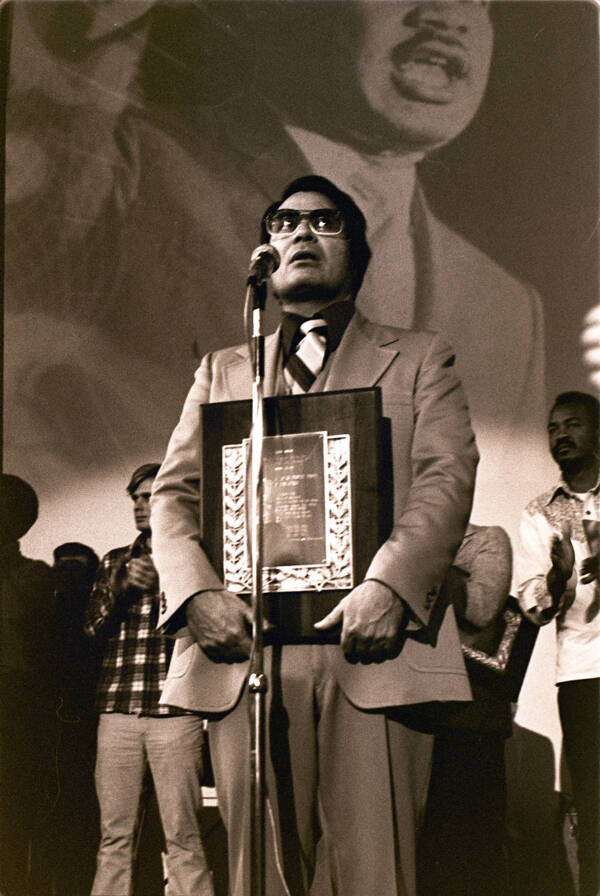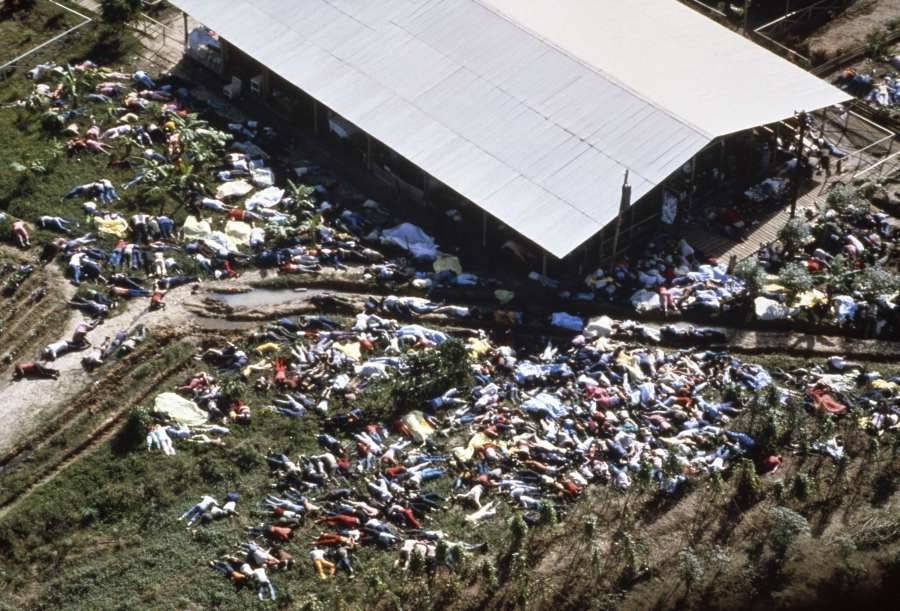Peoples Temple leader Jim Jones promised his followers a utopia. Instead, he led over 900 people to their deaths.
On a fall day in 1978, the world woke up to learn that more than 900 people in Guyana had died in a mass “suicide,” ostensibly at the command of the Peoples Temple cult leader Jim Jones. In the weeks that followed, horrifying details about the Jonestown Massacre emerged, as well as new information about the man who had orchestrated it.
In the aftermath of the Jonestown Massacre, Jones seemed like two people packed into one. He had spent his life fighting racism, but many of his followers who died at his command were Black. Jones preached as a Christian, but allegedly wanted to use religion to spread Marxist ideas.
He defended the poor and powerless, and yet lured hundreds of vulnerable people to their deaths via cyanide-laced punch. Perhaps most horrifying was that many of these followers did not want to die — and some were forced to consume the poison against their will — as it was eventually revealed.
So, how did Jones transform from an impoverished boy in Indiana to a dangerous cult leader? How did Jones go from an aspiring doctor, to a political activist, to a mass murderer? This is the story of Jim Jones, the Peoples Temple cult leader who ordered hundreds of people to die.
A Childhood In A Coffin-Making Town
Born on May 13, 1931 in Crete, Indiana, James Warren Jones grew up near Lynn, a small, poor town where almost half of the businesses were dedicated to building coffins. Jones’ father had been gassed while fighting in World War I, leaving him permanently disabled; his mother was domineering and critical, and frequently absent as the family’s sole breadwinner.
“I didn’t have any love given to me — I didn’t know what the hell love was,” Jones later said about his early life, according to PBS.
Jones claimed that he had a tumultuous childhood. He said his father often beat him, once because he’d brought home a Black friend. (Jones also claimed his father was part Cherokee, which his family denied.) Many people in town, Jones later declared, saw him as the “trash of the neighborhood.”
Unsupervised and running wild, Jones apparently spent most of his time learning about different religions. A neighbor took Jones under her wing and started taking him to church, which incited his interest in Christianity. Jones soon explored every church in town, listening to sermons given by Quakers, Nazarenes, Methodists, Apostolics, and more.
Before long, he began to preach to other children, who sometimes found him off-putting — especially since he disapproved of behavior like dancing.

Jones FamilyFuture cult leader Jim Jones as a young child.
Despite this, and despite Jones’ own recollections about his reputation, many of his peers in Lynn had fond memories of him. After the Jonestown Massacre, his high school classmates told The New York Times that they remembered Jones as “very quiet, very reserved” and determined to become a doctor. “He talked in medical terms all the time,” one recalled.
Meanwhile, Jones’ high school girlfriend recalled the powerful lure of Jones’ personality. She remembered that he once staged a pretend “funeral” for a rival school during a basketball game and captivated his audience.
“He got up and started preaching and did an incredible job,” she said. “He had the control and inflection. It was like the real thing, but was all intended to be a joke. He was very self-assured on stage. He had that coal black hair and piercing eyes that would look right through you.”
Meanwhile, Jim Jones indeed pursued his dreams of working in medicine. He started working the night shift at Memorial Hospital in Richmond at the age of 16, which is where he met his future wife, Marceline “Marcie” Boswell.
The two wed just after Jones turned 18 (Boswell was at least four years older than him). They were drawn together through their belief in helping the less fortunate, but Jones’ activism would soon take on a darker tone.
Jim Jones And The Peoples Temple Cult
After his wedding, Jim Jones abandoned his dreams of becoming a doctor and decided to become a faith healer instead. As The Guardian reports, Jones did not hold especially deep religious beliefs himself, but he believed that he could use religion to spread his Marxist beliefs to the masses.
“Jim used religion to try to get some people out of the opiate of religion,” his wife Marcie said in 1977, according to The New York Times.
Still, he became a student pastor at Somerset Methodist Church in 1952, even though he despised the church’s racial segregation. A few years later, in 1955, Jones opened an integrated church, which was first called Wings of Deliverance and then Peoples Temple. He modeled himself after Father Divine, a charismatic Black pastor whose followers worshiped him like a god. Before long, Jones would also start describing himself as a messiah.
While preaching in Indiana, Jim Jones made a name for himself both because of his support for the poor and downtrodden and because he claimed to perform miracles. In Indianapolis, PBS reports that he successfully pushed for the desegregation of public places, and used his church to take care of the elderly, poor, and mentally ill in the city. At the same time, Jones often used gruesome props like animal entrails to “prove” that he’d removed cancer from his disease-stricken congregants.

Jones FamilyJim Jones, his wife Marcie, and their “rainbow family.”
He’d also started sleeping with many young women in his congregation — even as he and his wife grew their family. They had a biological son, and adopted six additional Black, white, and Korean children.
In the mid-1960s, Jones moved his congregation of about 70 families to northern California after warning them of an imminent thermonuclear war. In the Golden State, his following swelled. Inspired by Jones’ anti-war and anti-capitalist message, thousands of Californians flocked to Peoples Temple, which allegedly hit a peak of 20,000 members in the early 1970s.
“He was a master of manipulation, but you saw him with this dark hair, the sunglasses, and the way that he spoke — he was a great orator — and it moved you, it inspired you because he was so passionate,” Leslie Wagner-Wilson, an ex-Peoples Temple member, told ABC News.
Jones’ followers weren’t the only ones who believed in him. Local politicians came to appreciate his sway too — and his ability to deliver votes.

Nancy Wong/Wikimedia CommonsJim Jones receiving a Martin Luther King Jr. Humanitarian Award in San Francisco, California. January 1977.
“There was a time when, if you were running for office in San Francisco, and you counted in your votes the poor, the Blacks, or young people, you’d better have Jones’ support,” Corey Buscher, a former press secretary to San Francisco Mayor George Moscone, told The New York Times. The Black Panthers also supported Jones, as did activists like Angela Davis.
But Jim Jones wasn’t what he appeared to be. As he discouraged his congregants from pursuing sex and romantic relationships, he continued to conduct several adulterous affairs with women as well as men. Jones also drained his congregants of their life savings, threatened them with blackmail if they left the cult, and used physical punishments.
“Punishment became a normal thing,” Yulanda Williams, a former Peoples Temple member, told ABC News. “His behavior became totally irrational. You begin to just go with the flow out of fear. Fear of the fact that if you left the church, what you might experience, what danger might be brought to you.”
By the mid-1970s, whispers about Jones’ inappropriate and abusive behavior started to get louder. So, Jim Jones executed a plan that had long been in the works — to move his congregation to his recently purchased settlement in Guyana, which would soon be known as “Jonestown.”
Inside The Jonestown Massacre
In 1977, Jim Jones, his family, and nearly 1,000 of his followers arrived in Jonestown. There, the cult leader tightened his grip over his congregation.
Jones increasingly preached about dark, outside forces, and he ran the compound like a prison camp. Armed guards prowled the perimeter, Jones’ voice boomed over a loudspeaker, and people were given little to eat. In an eerie foreshadowing of the Jonestown Massacre, people were also subjected to “loyalty tests” in which they were woken up at night, handed a glass of “poison,” and told to drink it.
Meanwhile, warnings about Jones were growing louder back in the United States. The New York Times reports that in April 1977, family members of Jones’ followers accused him of “human rights violations.” That June, two former Peoples Temple members claimed that he was making his followers rehearse for a “mass suicide,” and that he was plotting a “mass murder.”

San Diego State University/Wikimedia CommonsA sign that reads “Welcome to Jonestown, Peoples Temple Agricultural Project.”
These claims eventually drew the attention of U.S. Congressman Leo J. Ryan, especially since some of his San Francisco constituents happened to be followers of Jones. On November 17, 1978, Ryan flew to Guyana with a delegation of staff members, reporters, and concerned relatives of Peoples Temple members, in order to investigate the claims against Jim Jones.
Ryan and his delegation were initially welcomed warmly in Jonestown. Jones spoke with reporters, and Ryan and the others were even treated to dinner. Some Peoples Temple members wanted to leave the compound, however, and Ryan and his delegation escorted them to the airstrip in nearby Port Kaituma just one day after they’d arrived.
But their plane never got off the ground.
Instead, Ryan, his delegation, and the Peoples Temple defectors were ambushed by several of Jones’ armed followers. Ryan, NBC correspondent Don Harris, NBC cameraman Bob Brown, San Francisco Examiner photographer Greg Robinson, and Peoples Temple defector Patricia Parks were shot and killed. Several others in the group were wounded.

Wikimedia CommonsU.S. Congressman Leo J. Ryan, whose investigation of cult leader Jim Jones precipitated the Jonestown Massacre.
Back at the compound, Jones put his plan for a “revolutionary suicide” into action. Jones told his followers about Ryan’s murder, and warned that soldiers would soon arrive to torture everyone in Jonestown. Hundreds of Peoples Temple members — starting with about 300 children — were ordered to drink a grape-flavored punch called Flavor Aid that was laced with cyanide and Valium. Some followers drank the poison willingly, but others were forced, and some were forcibly injected with syringes.
“Don’t be afraid to die. You’ll see people land out here. They’ll torture some of our children here. They’ll torture our people. They’ll torture our seniors. We cannot have this,” Jones said, in the infamous “death tapes” that were discovered on the compound after the Jonestown Massacre.
The next day, Guyanese officials discovered the grisly aftermath of the massacre at Jonestown.
Over 900 people lay dead, including Jones, his wife, and most of his children (Jones’ two children who survived just happened to be away in the Guyanese capital of Georgetown that day). Unlike most of his followers, Jones had not consumed the poison. Instead, he had died from a gunshot wound to the head, which was likely self-inflicted.
The Legacy Of Jim Jones And Jonestown
What happened at Jonestown shocked the world. Until 9/11, the Jonestown Massacre stood as the largest incident of intentional civilian deaths in U.S. history, and Peoples Temple became one of America’s most infamous cults.
The cult’s use of deadly punch inspired the phrase “drinking the Kool-Aid” to describe the act of blindly following someone — a phrase that remains controversial since several Peoples Temple members were murdered.
And, of course, the massacre raised questions about the cult leader Jim Jones himself. How had he managed to persuade his followers to die? And how had warnings about his plans for “revolutionary suicide” been ignored?

David Hume Kennerly/Getty ImagesThe gruesome scene of the Jonestown Massacre, where 909 people — including about 300 children — were killed.
“You got to remember, this all started back in the ’60s and ’70s. Our society was in turmoil. There was constant aggression going on. You had riots going on,” former Peoples Temple member Thom Bogue told ABC News. “And then you have Jim Jones saying, ‘Do I have the place for you. For us.'”
Jones, under the guise of helping vulnerable people, preyed on their weaknesses. He offered an open hand, but gave people a closed fist. And it should not be forgotten that even though Jones championed equal rights, many people at Jonestown who died because of him were Black.
“I think that Jim Jones was a predator,” former Peoples Temple member Yulanda Williams said. “He definitely was a monster, a real monster.”
After reading about the life and death of Peoples Temple cult leader Jim Jones, discover the disturbing story of the Heaven’s Gate cult, which also ended tragically with a mass suicide in 1997. Or, learn about the Branch Davidians, the Texas cult that was infamously raided by the FBI in 1993.






